Private First Class John Franklin “Johnny” Garrard
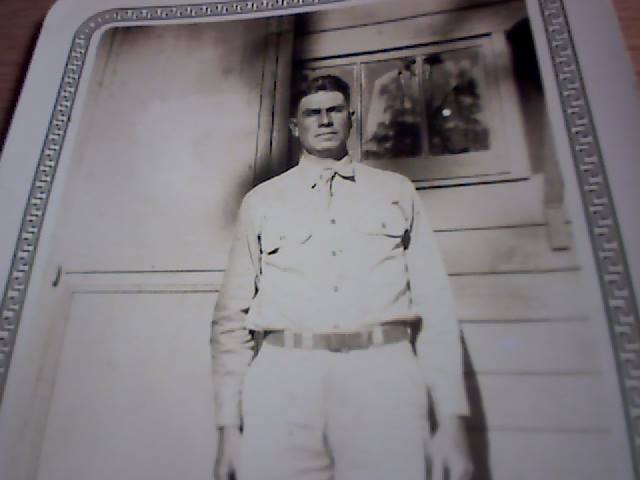
- Unit: 79th Infantry Division, 315th Infantry Regiment, Company B
- Service Number: 34279591
- Date of Birth: December 22, 1909
- Entered the Military: June 22, 1942
- Date of Death: June 20, 1944
- Hometown: Winston, Mississippi
- Place of Death: near Tollevast, France
- Award(s): Purple Heart
- Cemetery: Plot F, Row 21, Grave 30. Normandy American Cemetery, Colleville-sur-Mer, France
Mentored by Mr. Al Wheat
McComb High School
2014-2015
Early Life
John F. Garrard was born in 1909 to Willton and Marme Garrard in Winston County, Mississippi. Garrard was born into hard times: the nearest city to where he lived, Louisville, was small with a relatively low income. He grew up with nine siblings: Luther, James, Elnora Irene, Joe, Cora, Willie, Alvin, Willis, and Homer. Garrard worked on his family farm part-time until he finished the fifth grade. Once he had his basic academics completed, he worked on the farm full time, a concept that was common in rural Mississippi. Due to the rapid mechanization of farm labor, fewer hands were needed in the fields.
John was drafted into the U.S. Army in 1942. It is still unknown as to when Garrard married. He was listed single upon enlistment into the military, but his military headstone inscription and internment record lists Mary A. Garrard of Louisville, Mississippi, as his wife.
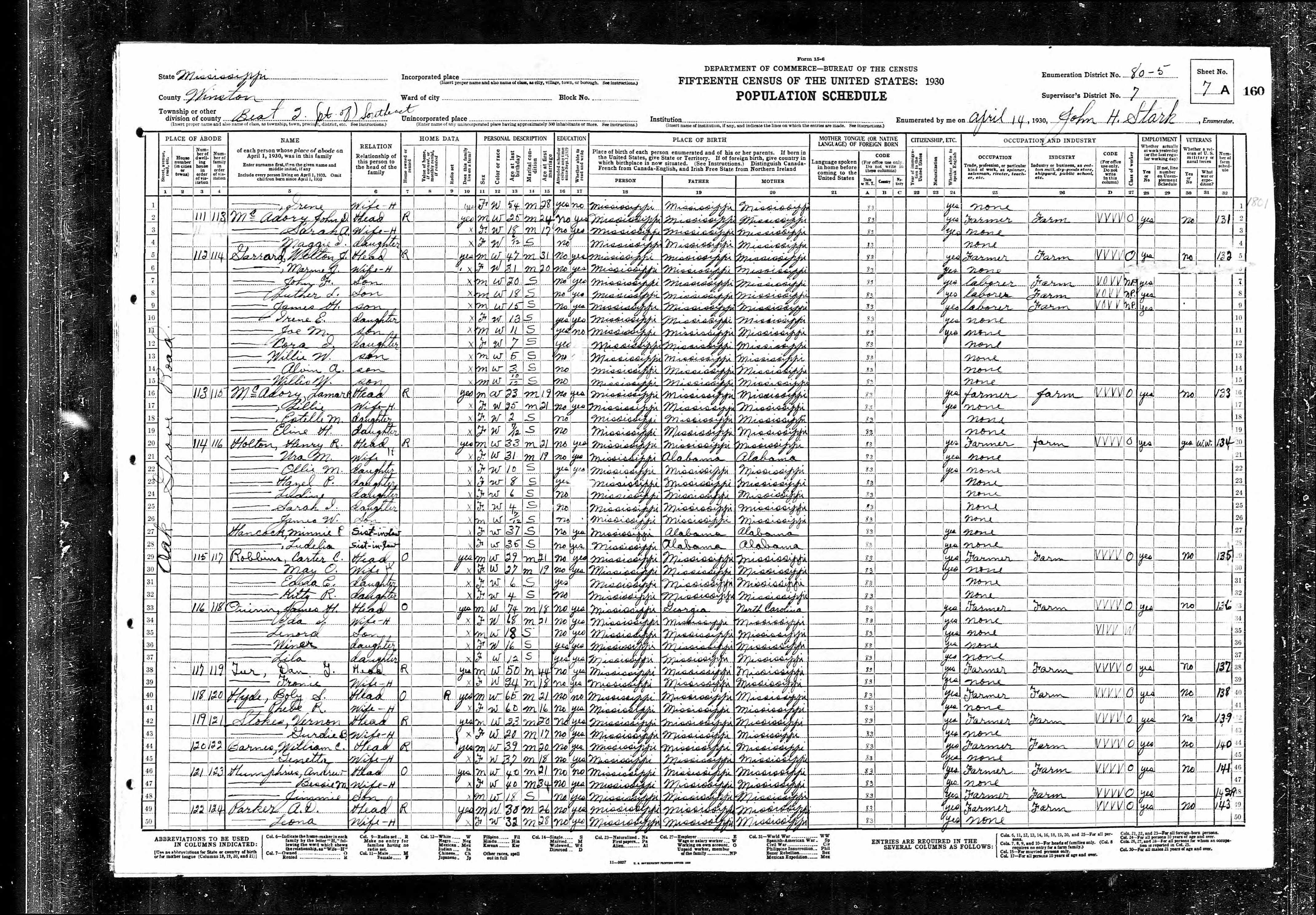
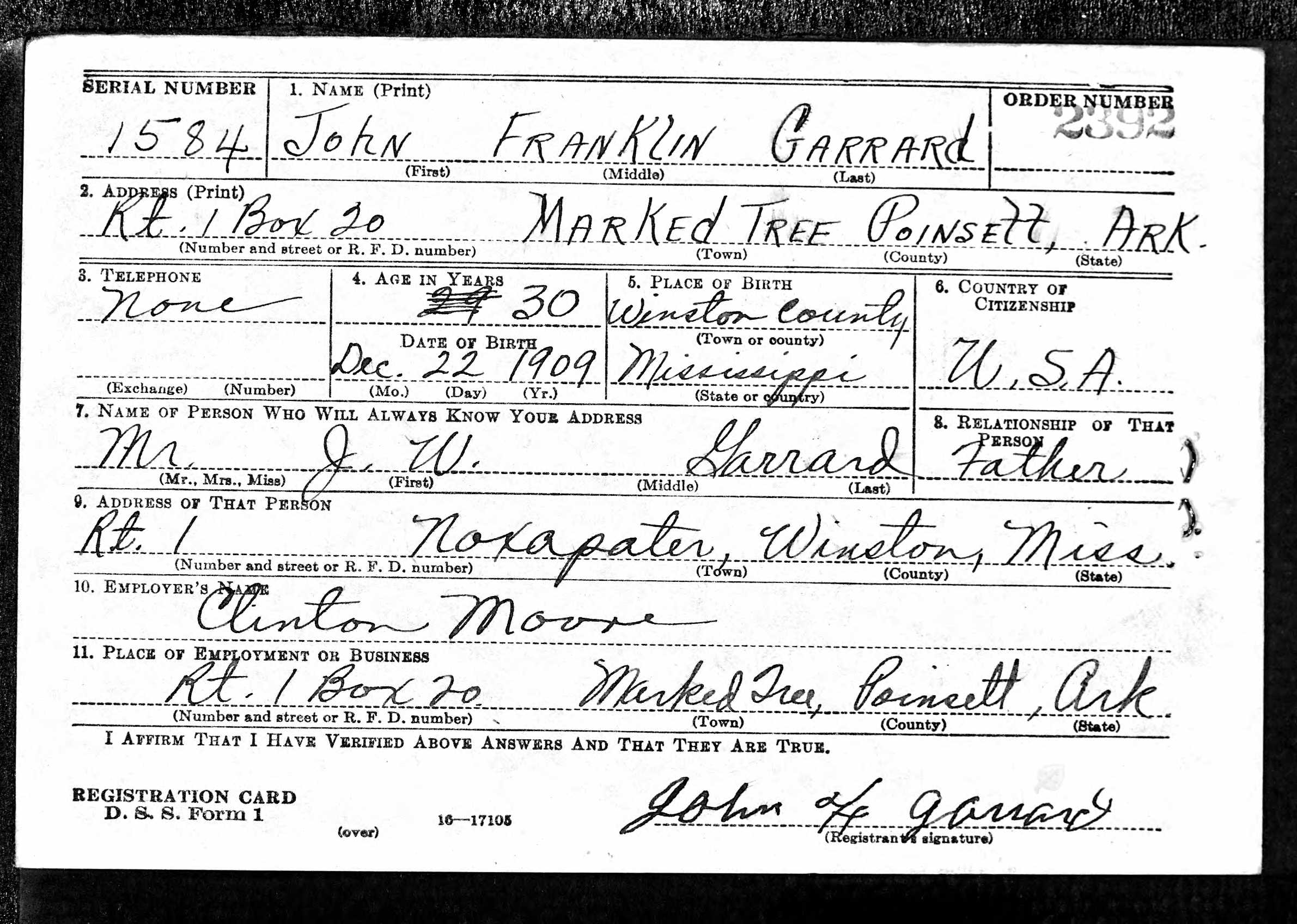
Homefront
Mississippi did not have the industry that some states had, with its primary industry during the war being Ingalls Shipbuilding on the Gulf Coast. By the close of the war, the shipyard had built over 70 ships for the war effort. Just north of Garrard’s home county in Prairie, Mississippi, a large ordnance plant was built. Outside of these two outliers, however, Mississippi stayed primarily agricultural during the war.
Crop production increased during the war. This influx of demand led to more money, which led many farms to modernize. While this increased production, it also led to some job losses as farms became less dependent on “hands-on” workers. To help these people find work and continue the Mississippi’s economic increase, the War Manpower Commission (WMC) encouraged many to join the armed forces.
Mississippi was home to two central military installations during World War II: Camp Shelby in Hattiesburg and Keesler Air Field (now Keesler Air Force Base) in Biloxi. Camp Shelby, at its peak, held over 50,000 servicemen and women, including Private First Class John Garrard. Keesler, at its peak, was the largest airbase in the war and trained over 500,000 pilots and mechanics for the war.
The above situations, in particular the disappearing farm jobs, led to more racism in the state of Mississippi, which increased after the war. African Americans held the majority of the farm jobs, so they felt the brunt of the job loss. Farm labor came under the control of the U.S. Department of Agriculture (USDA), over which the farm and plantation owners in Mississippi had significant control. This protected their interests and prevented further African American independence.
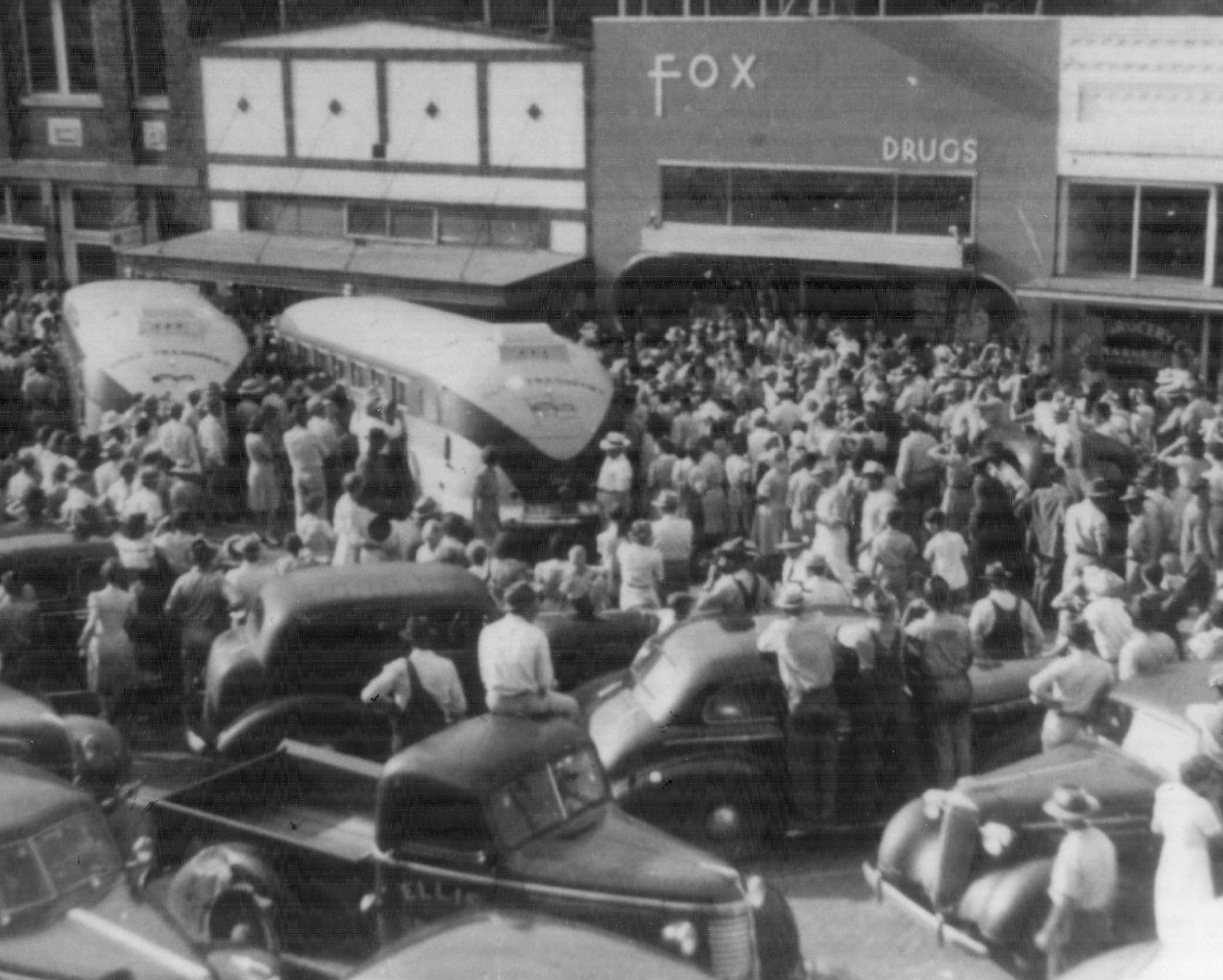
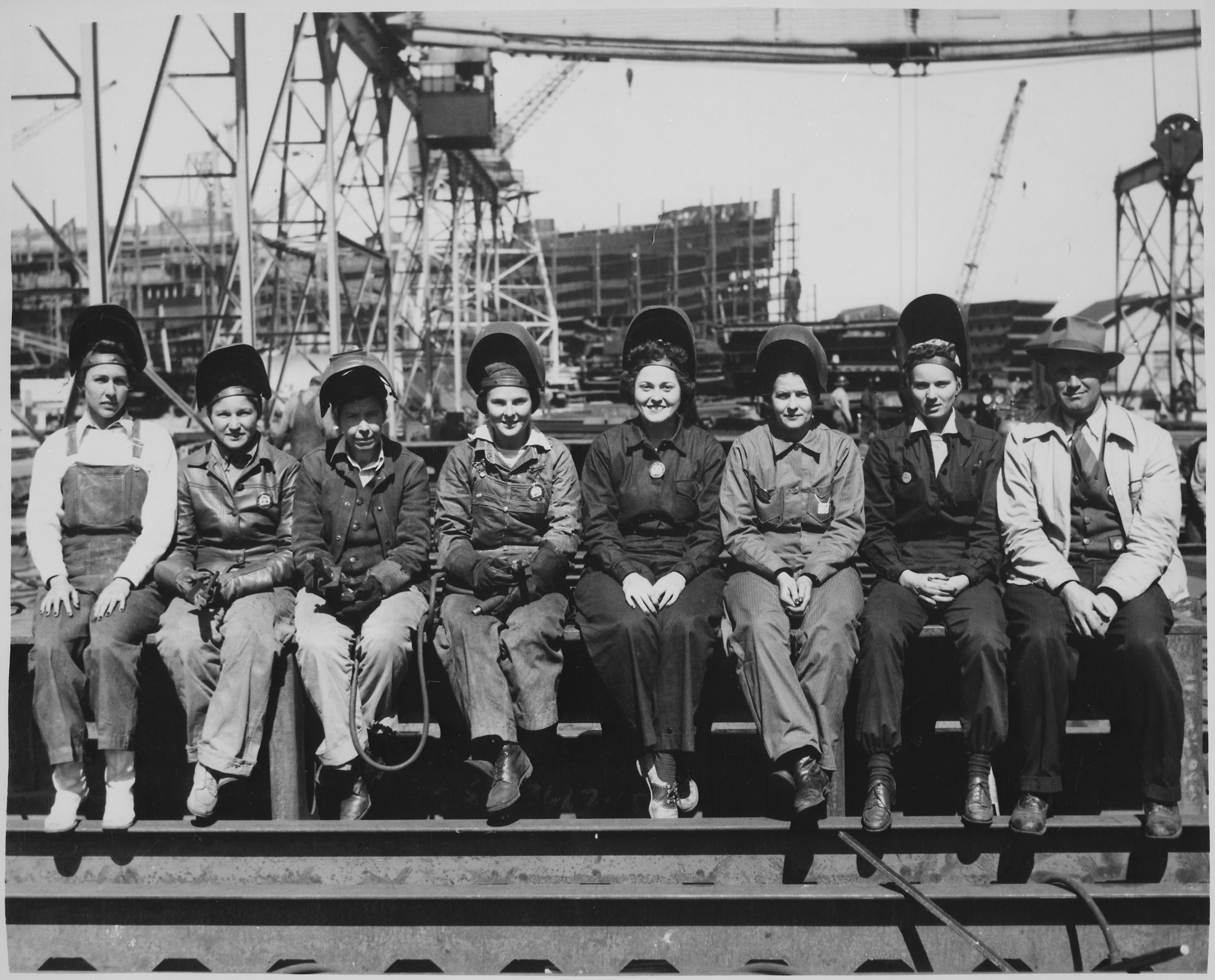
Military Experience
John Garrard was a part of the 315th Infantry Regiment in the 79th Infantry Division. The 315th Infantry Regiment had a very arduous route to land on Omaha Beach in June of 1944. Before landing, Garrard was initially stationed at Camp Shelby, a large Army base in Hattiesburg, Mississippi. He completed his summer training in Yuma, Arizona, and his winter training in Kansas before finally arriving in Liverpool in April 1944.
Garrard was an infantryman in the war, serving as the first line of defense during the invasion and following plans. They were truly the “workhorses” of the military, often responsible for transporting goods in addition to fighting. It was during these missions that Private Garrard lost his life.
After landing on Omaha Beach, it was the responsibility of the 79th Infantry Division to travel up the Cherbourg peninsula and capture the city of Cherbourg itself. Outside of Tollevast, France, Private Garrard lost his life on June 22, 1944.
Following the attack outside of Tollevast, the 79th Infantry Division continued with their objectives: they took the city of Cherbourg and then continued throughout the French countryside.
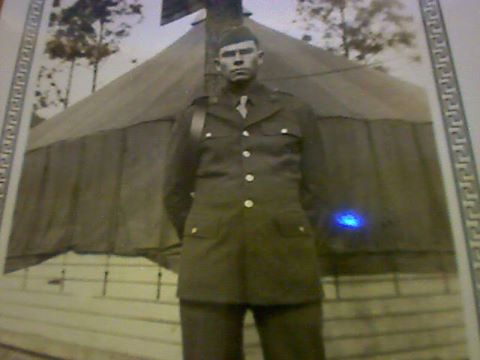
Eulogy
John Garrard was born and raised outside of Louisville, Mississippi, in 1909. He lived with his parents and eight siblings, of which he was neither the youngest nor the oldest. Throughout his youth, Garrard worked on the family farm. After getting his primary education at the elementary school level, he eventually dropped out of school to work full time on the family farm with his aging parents.
In 1942, Garrard was drafted into the United States Army. Little did he know that this would be no ordinary experience, and no training would ready him for the arduous task ahead that would sadly end his days on this earth.
Garrard became part of the 79th Infantry Division, 315th Infantry Regiment, Company B. He reported to Camp Shelby for basic training. He then completed summer training in Yuma, Arizona, and winter condition training in Kansas. Garrard and his division arrived in Liverpool, England, in April 1944.
His division was then part of the Omaha Beach invasion, arriving on D-Day +6. The 315th Infantry Regiment landed further up Omaha Beach than the leading group of Infantrymen. John F. Garrard died, via a gunshot wound in his throat, while facing heavy opposition on the approach to Cherbourg, France, on June 22, 1944. He is now resting between these two individuals at this site who also gave their lives for freedom.
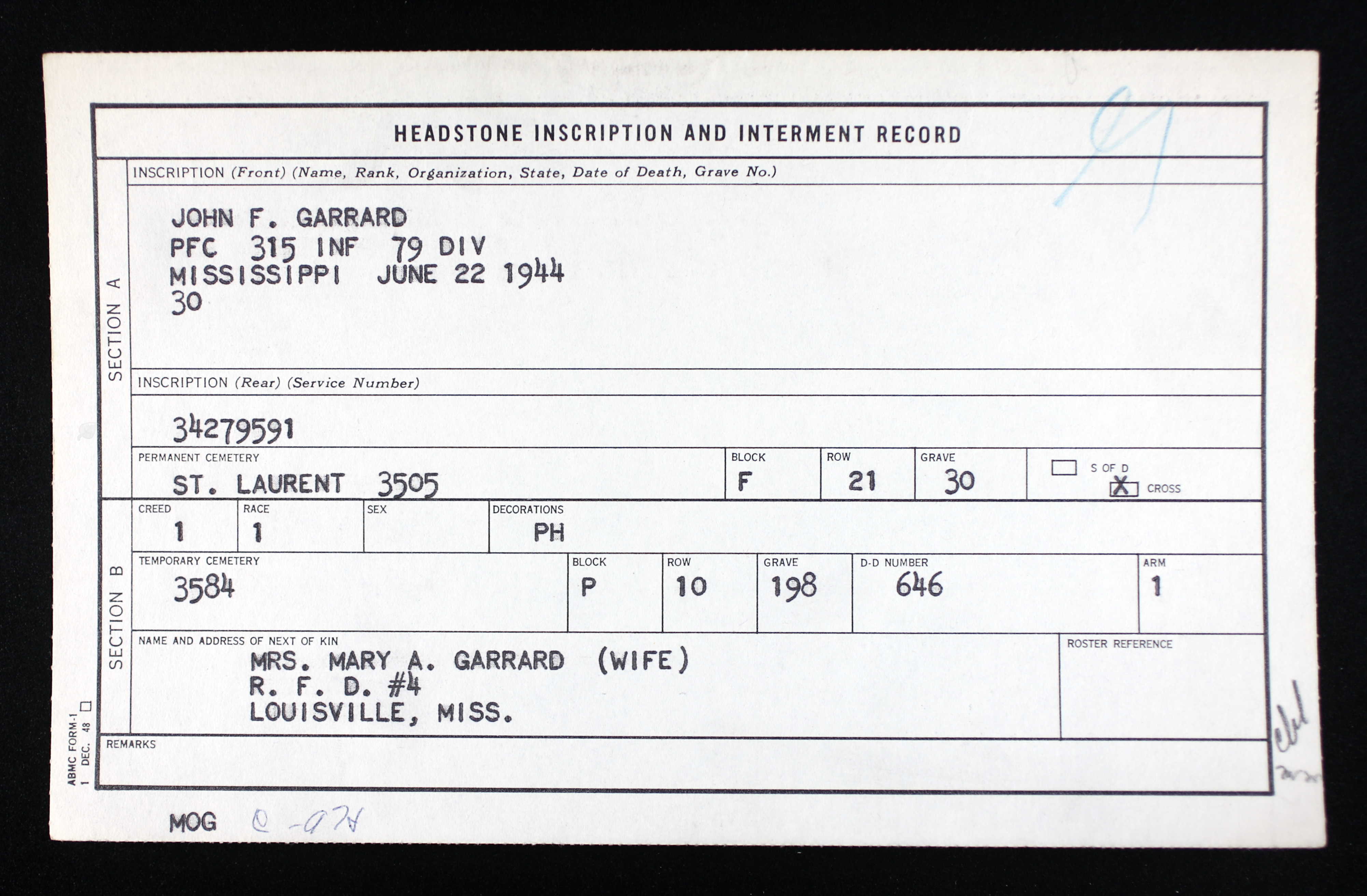
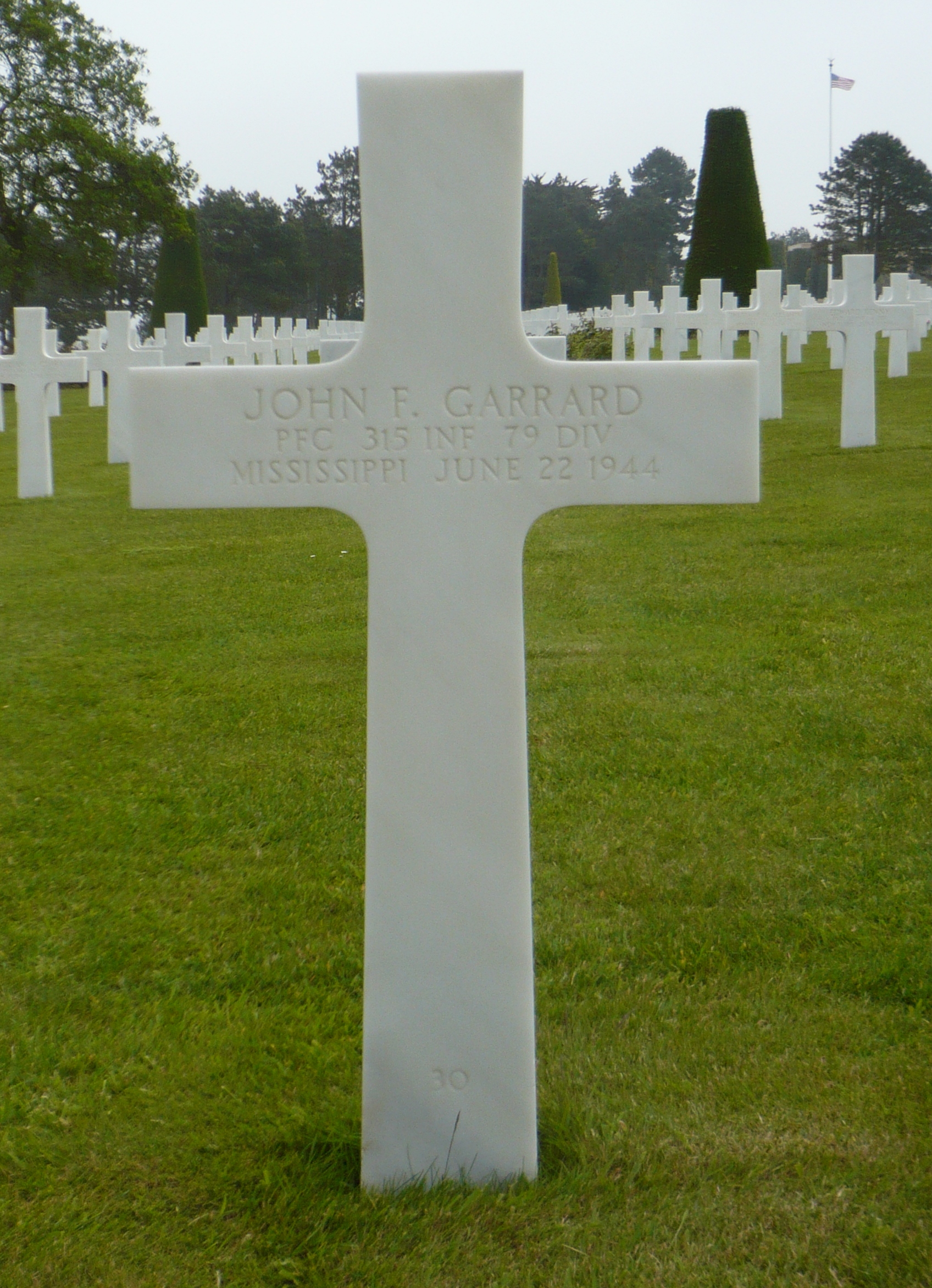
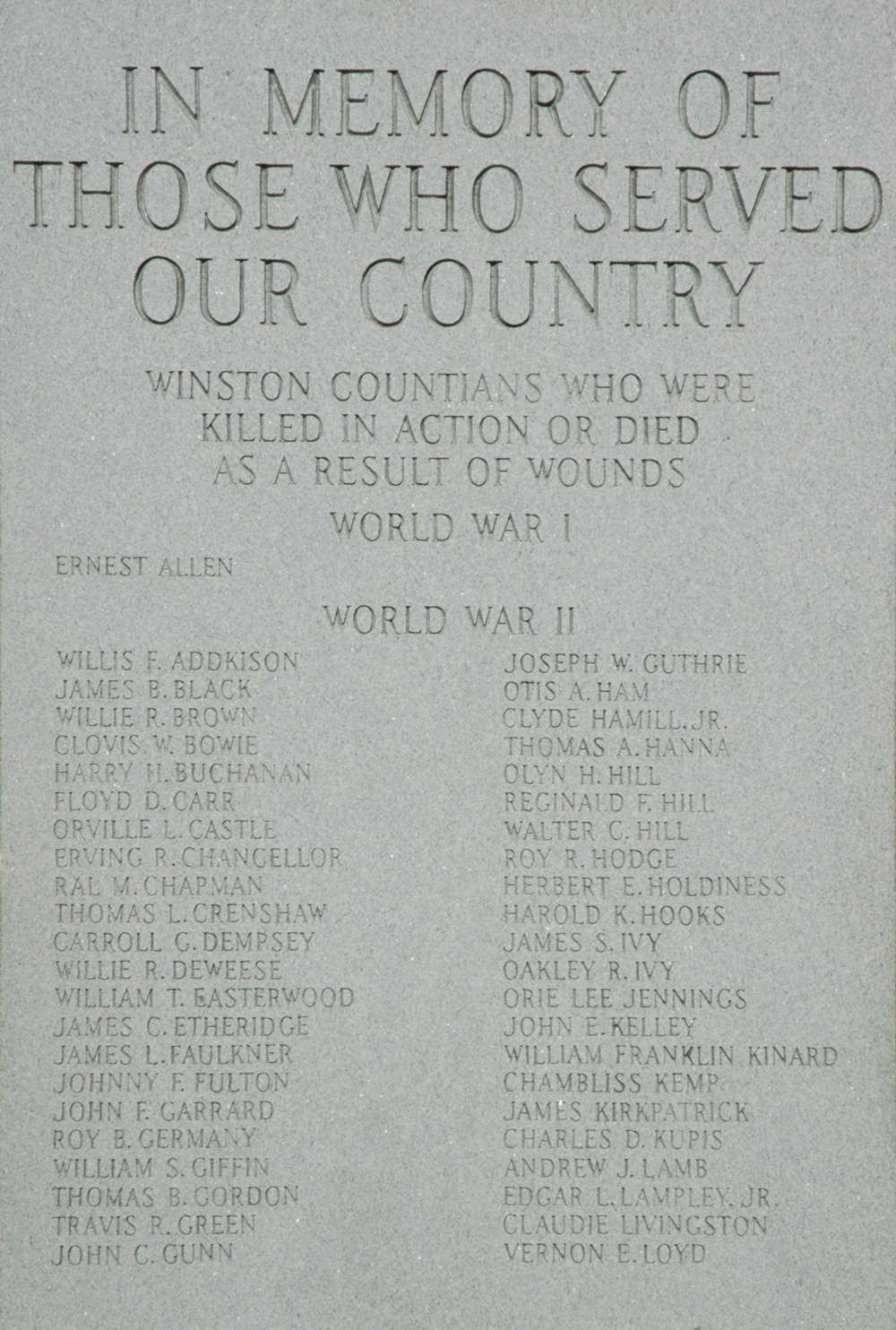
Reflection
June 20, 2015. A day that I knew would change my perception of how I do and see things as an upcoming-true American citizen. As I boarded the airplane from New Orleans to Washington, D.C., I knew that great and powerful knowledge would be bestowed upon me. I knew it would give me a huge edge and boost that almost anyone you ask would be able to testify and truthfully preach about as I or any one of the past five groups can.
When I finally met the individuals, I would be spending two weeks with, and I immediately felt a little intimidated because I thought I was not in the right place. Everyone there seemed so much more competent and way above the standards that I’ve known to accept since I was old enough to understand what’s going on. The opening dinner opened my eyes just a little. It made me realize that I was somewhat visible. I was chosen to give a special Normandy Institute blanket to one of the men being honored that night. It was the start of a great experience.
Up until the Normandy program, I was the type of person that stayed tucked in my shell. The staff and student environment will take you out of your comfort zone. The Monday to Monday schedules were the worst and best, honestly speaking. It was way out of my league (I thought), but it turned out I loved and enjoyed that the most. I learned so much and did so many things that I would never have seen myself experiencing. Given where I come from and my circumstances at the time, it was beyond what I expected. It was very emotional for me to get and show love for a group of individuals that are so distant from me. Even after staying up the entire day, we were on our way to Paris. I was so enthusiastic that I was still going like I had a week of rest for a little while, haha.
Paris was so brand new to me. I felt just like an infant just entering life. Throughout the trip in between, I often blocked the world out and reminisced on how proud my parents are of me. It’s all for them; until the day I become old and retire from all of my services, I will work and exercise the lessons, testimonies, and even hardships that the Normandy Institute taught me. Even with the success and respect that I’ve earned from everyone, I will always honor and respect everyone involved with my experience.
Bibliography
Primary Sources
79th Infantry Division. Baton Rouge: Army and Navy Publishing Company, 1946.
79th Infantry Division. World War II Operations Records, 1940-48. National Archives and Records Administration, College Park, MD.
The Cross of Lorraine: a combat history of the 79th Infantry Division, June 1942-December 1945. Washington, D.C.: World War Regimental Histories: 1946. Bangor Public Library. digicom.bpl.lib.me.us/ww_reg_his/39/?utm_source=digicom.bpl.lib.me.us%2Fww_reg_his%2F39&utm_medium=PDF&utm_campaign=PDFCoverPages.
Garrard Family. Email interview with author. July 20, 2015.
Garrard Family Photographs. Courtesy of the Garrard Family.
Ingalls Shipyard’s first launch, and the world’s first all-welded ship, was the Exchequer. Photograph. 1940. Ingalls Shipbuilding, Pascagoula, Mississippi. mshistorynow.mdah.state.ms.us/articles/247/the-effects-of-world-war-II-on-mississippis-economy.
John F. Garrard. Headstone and Interment Records for U.S. Military Cemeteries on Foreign Soil, 1942-1949. Digital Image. ancestry.com.
John F. Garrard. Individual Deceased Personnel File. Department of the Army.
John F. Garrard. World War II Army Enlistment Files, 1938-1946. ancestry.com.
John F. Garrard. World War II Draft Cards, Young Men, 1940-1947. ancestry.com.
John F. Garrard. World War II Hospital Admission Card Files, 1942-1954. ancestry.com.
Line up of some of women welders including the women’s welding champion of Ingalls [Shipbuilding Corp., Pascagoula, MS]. Photograph. 1943. National Archives and Records Administration (522890). catalog.archives.gov/id/522890.
Mississippi. Winston County. 1910 U.S. Federal Census. Digital Image. ancestry.com.
Mississippi. Winston County. 1930 U.S. Federal Census. Digital Image. ancestry.com.
This is downtown Louisville, 1940s, when buses came to pick up all the men to go to war… Photograph. 1940s. Winston County, US GenWeb Project. www.msgw.org/winston/townsschools.htm.
Secondary Sources
“79th U.S. Infantry Division.” Combat Reels. Accessed March 16, 2021. www.combatreels.com/79th_infantry_division_normandy_dvd.cfm.
“79th Infantry Division – Cross of Lorraine.” U.S. Army Divisions. Accessed March 16, 2021. www.armydivs.com/79th-infantry-division.
“315th Regiment.” U.S. Army Center of Military History. Updated December 15, 2016. Accessed March 16, 2021. history.army.mil/html/forcestruc/lineages/branches/regt/0315rgt.htm.
Farrell, Sean. “Not Just Farms Anymore: The Effects of World War II on Mississippi’s Economy.” Mississippi History Now. Accessed March 16, 2021. mshistorynow.mdah.state.ms.us/articles/247/the-effects-of-world-war-II-on-mississippis-economy.
“John F. Garrard.” American Battle Monuments Commission. Accessed March 16, 2021. www.abmc.gov/decedent-search/garrard%3Djohn.
“PFC John F. Garrard.” Find a Grave. Updated August 8, 2010. Accessed March 15, 2021. www.findagrave.com/memorial/56644768/john-f-garrard.

